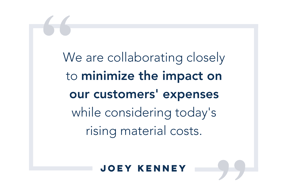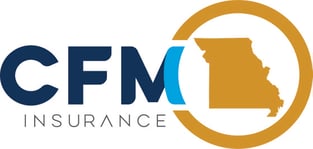Learn how the reinsurance industry’s changing market dynamics affect mutual insurers and their policyholders.
 In the Missouri economy, mutual insurance brokerages are crucial in providing risk management solutions.
In the Missouri economy, mutual insurance brokerages are crucial in providing risk management solutions.
Rural areas often face unique challenges and risks, such as natural disasters, agricultural exposures, and limited access to services.
As a Missouri-exclusive 380 mutual, our mission at CFM is to provide quality insurance at a competitive price and to offer personal, friendly, and dependable service. Founded in 1869, we’ve protected Missouri families and farms for over 150 years.
So, how do we manage risks when insuring rural Missouri? One way is reinsurance.
Key Takeaways
- Understand reinsurance and its impact on rural Missouri.
- Understand how reinsurance affects policyholders.
- Understand how CFM is proactively addressing these challenges.
What is Reinsurance?
Reinsurance is how insurance companies like CFM transfer a portion of their risk to other insurance companies, known as reinsurers. Essentially, it's insurance for insurance companies.
CFM began brokering our reinsurance account in 2019 to diversify our portfolio of reinsurers. This has allowed CFM to partner with multiple reinsurers to provide the best protection for our company and, ultimately, our policyholders.
Unlike traditional insurance, which primarily involves policyholders transferring risk to insurance companies, reinsurance involves the insurance company ceding (transferring) a portion of their risk to other entities known as reinsurers.
Here's how it works:
- Reinsurance transfers risk to mitigate the financial impact of large losses; the insurance company can cede a portion of that risk to a reinsurer.
- Reinsurance allows insurance companies to spread the risk across multiple entities.
- Reinsurance provides access to additional capacity in the insurance market, enabling property and casualty insurance brokers to find coverage for clients with larger or more complex risks.
As a global industry, reinsurance operates at the intersection of insurance and finance, drawing in capital investors seeking opportunities for risk diversification and potential returns.
Overall, reinsurance is a critical tool that enables insurance brokerages to manage risk and provide comprehensive coverage to their clients while maintaining financial stability in an ever-changing insurance landscape.
The Role of Reinsurance in Rural Missouri
Reinsurance provides mutual insurers in rural Missouri a mechanism to transfer some risk to reinsurers. This risk transfer allows insurers to protect themselves against large and unexpected losses, particularly those resulting from severe weather events such as tornadoes, floods, and hailstorms, which are common in rural areas.
Reinsurance provides risk diversification for mutual insurers by spreading their exposure across a broader geographic area. By accessing reinsurance markets beyond Missouri, insurers can reduce the concentration of risk within their local communities, minimizing the impact of localized events on their financial health.
By spreading risk and enhancing capacity, reinsurance helps to keep insurance coverage affordable and accessible for policyholders in rural Missouri. Lower reinsurance costs can translate into lower premiums for policyholders, making insurance more affordable for families, farmers, and businesses in rural communities.
The Bigger Picture
Reinsurance, as a global industry of capital investors, plays a critical role in the broader financial ecosystem by facilitating risk transfer, capital allocation, and investment opportunities. By connecting insurers with investors seeking exposure to insurance-related risks, reinsurance enhances the resilience and stability of the insurance marketplace, promotes innovation, and supports economic growth.
Investors participate in reinsurance for various reasons, including portfolio diversification, yield enhancement, and access to uncorrelated risk exposures. Reinsurers and investors collaborate to create value for policyholders, shareholders, and society through alternative capital structures, risk-linked securities, and other innovative instruments.
As the reinsurance industry evolves in response to changing market dynamics, technological advancements, and regulatory developments, collaboration and partnership between insurers, reinsurers, and investors will remain essential to navigating uncertainty, managing risk effectively, and seizing opportunities for growth and innovation.
How Does Reinsurance Affect Policyholders?
Reinsurance allows mutual insurers to enhance capacity, diversify risk portfolios, and maintain stability in turbulent times. For example, we can write coverages such as Service Line, Equipment Breakdown, and Inland Flood, thanks to reinsurance companies.
However, just as the property and casualty insurance landscape is being affected by various risks, including climate change, interest rates, cyber threats, pandemic risks, and regulatory challenges, so is the reinsurance industry.
So, what happens when mutual insurers face extended challenges due to rising costs and increased reinsurance market volatility?
Impact on Financial Stability
- If insurers cannot obtain reinsurance coverage at affordable rates or secure sufficient reinsurance capacity to manage their risks, they may face increased financial strain and operational challenges. Policyholders may be exposed to the risk of insurer insolvency, which can result in unpaid claims and loss of coverage.
Reduced Coverage Options
- As reinsurance costs rise and market volatility increases, mutual insurers may face limitations on the availability of reinsurance capacity. This can result in reduced coverage options for policyholders, as insurers may be forced to scale back their underwriting or limit coverage in certain high-risk areas.
Need for Risk Mitigation Strategies
- In response to challenges in the reinsurance market, mutual insurers and policyholders may need to implement proactive risk mitigation strategies to protect against potential losses. This may involve investing in loss prevention measures, implementing risk management protocols, or exploring alternative risk transfer solutions.
Increased Premiums
- Rising reinsurance costs can directly impact the pricing of insurance policies, leading to higher premiums for policyholders. This can make insurance less affordable, particularly for policyholders in rural areas where insurance premiums may already be higher due to increased risk factors such as natural disasters or limited access to services.
Effective collaboration between insurers, reinsurers, regulators, and policyholders is essential to navigate these challenges and ensure continued insurance coverage is available and affordable for rural communities.
Proactively Addressing Challenges
 As rural communities continue to confront the challenges of climate change and economic volatility, the partnership between mutual insurers and reinsurers remains essential in safeguarding the livelihoods and well-being of those they serve.
As rural communities continue to confront the challenges of climate change and economic volatility, the partnership between mutual insurers and reinsurers remains essential in safeguarding the livelihoods and well-being of those they serve.
We are proactively addressing challenges with reinsurance through several strategic approaches:
Risk Management & Loss Prevention
- We actively spread risk geographically by merging with other Missouri Mutual companies to help lower our reinsurance costs. In most cases, these companies were single county writers who could not get reinsurance due to the hard market or the cost of reinsurance being too high.
- By introducing a minimum $2,500 wind/hail deductible, CFM can lower reinsurance costs, thus helping make insurance more affordable for our policyholders.
- Other changes we have made, for example, coverage limit requirements, will also help mitigate reinsurance costs.
Optimization of Reinsurance Program
- Reviewing and optimizing reinsurance programs regularly helps us identify opportunities to reduce costs, improve coverage terms, and enhance overall program effectiveness.
Collaboration with Reinsurers
- Valuable insights, expertise, and market intelligence inform our decision-making and enhance the effectiveness of reinsurance programs.
Investment in Technology & Innovation
- Investing in data analytics, predictive modeling, and digital platforms helps us better understand and manage risk, optimize reinsurance purchasing decisions, and achieve greater cost efficiencies over time.
Regulatory Engagement & Advocacy
- Engaging with regulators and advocating for policies that support a competitive and stable reinsurance market can help create a favorable regulatory environment.
By proactively addressing these challenges through strategic risk management, consumer education, and exploring alternative risk transfer solutions, we can help our clients navigate market uncertainties and maintain effective insurance coverage to protect against potential losses.
Knowledge is Power
 Many policyholders may not fully understand the complexities of the insurance industry or the potential implications of market dynamics on their coverage and premiums.
Many policyholders may not fully understand the complexities of the insurance industry or the potential implications of market dynamics on their coverage and premiums.
As trusted advisors, we are responsible for educating our policyholders about the impact of rising reinsurance costs and market volatility.
Educating policyholders about the extended challenges due to rising costs and increased reinsurance market volatility is essential for mutual insurers to promote transparency, informed decision-making, risk awareness, and long-term relationship building.
By providing comprehensive information about the factors influencing insurance costs and coverage availability, we empower our policyholders to understand their options, evaluate risks, and make decisions that align with their financial goals and risk tolerance.
By fulfilling this responsibility, we demonstrate our commitment to honesty and integrity and foster strong relationships built on trust and transparency.


Your Comments :